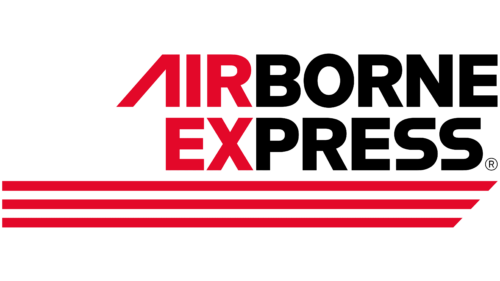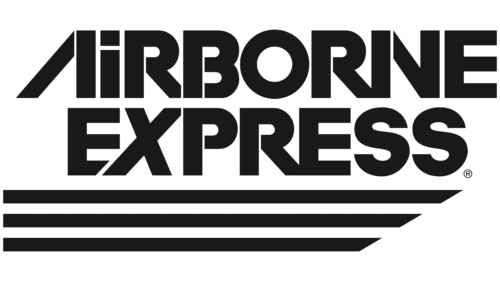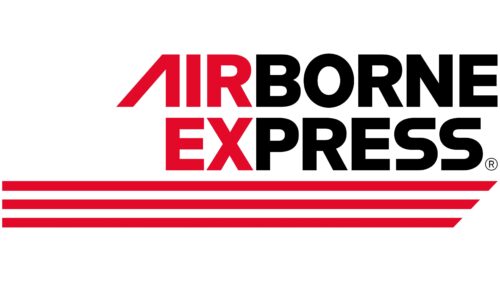The Airborne Express logo is a visual affirmation of the brand’s focus on speed, reliability, and precision in the fast-paced world of air cargo transportation. It is a hallmark of a company committed to fast and efficient solutions. This logo creates a trusting relationship with old and new customers.
Airborne Express: Brand overview
Airborne Express, established in 1946 in Seattle as Airborne Flower Traffic Association, initially focused on shipping flowers from the West to the East Coast of the U.S. Transforming into Airborne Freight Corporation in the 1960s, the company expanded its services beyond flowers to include a wide range of cargo and documents, marking its entry into the broader express delivery market.
In the 1970s, Airborne inaugurated its first major hub in Wilmington, Ohio, setting up a foundation for a national delivery network that aimed to rival industry giants. By the 1980s, the company had expanded, opening new distribution centers nationwide and augmenting its fleet with cargo aircraft. This growth positioned Airborne as the third-largest express delivery service in the U.S., behind FedEx and UPS.
The 1990s introduced significant technological advancements at Airborne, such as barcode scanning and online package tracking, which improved operational efficiency and customer service. During this period, the company also established a presence in international markets, including Europe and Asia.
The early 2000s, however, brought challenges. Stiff competition and an economic slowdown led to a restructuring effort in 2000 and 2001 to reduce costs and optimize operations. Despite these efforts, Airborne’s struggles led to its acquisition by DHL in 2003, a move that greatly enhanced DHL’s market share in the U.S.
Following the acquisition, the integration of Airborne Express and DHL operations in the U.S. took place between 2004 and 2005, leading to the retirement of the Airborne Express brand. In 2008, faced with continued losses and competitive pressure, Deutsche Post DHL ceased Airborne’s domestic operations and sold part of its assets. By 2009, the remaining operations of Airborne Express were fully integrated into DHL’s global network.
The history of Airborne Express is a testament to an American company’s significant role in the development of the express delivery industry. Despite facing considerable challenges, including market consolidation and competition with global giants, Airborne Express’s legacy lives on through its integration into DHL’s international logistics network.
Meaning and History
The evolution of the Airborne Express logos reflects the company’s expansion and commitment to providing reliable and efficient express delivery services. Throughout history, the logos have featured elements symbolizing speed, reliability, and global reach—key qualities that built the company’s reputation. These logos were crucial in communicating Airborne Express’s values and establishing customer brand recognition. Even after DHL acquired Airborne Express in 2003, elements of its brand identity and logo continued to be used, highlighting the brand’s strength and importance in the express delivery market.
What is Airborne Express?
Airborne Express, once a key player in express delivery and cargo services, was based in Seattle, Washington, with a main hub in Wilmington, Ohio. It was vital in global logistics, ensuring reliable and timely cargo services for various industries. From its beginnings in the 1940s, Airborne Express grew into a leading freight carrier in the United States, holding its own against major competitors like FedEx and UPS. The company offered courier and freight services, expanding to international shipping and supply chain management. Though DHL acquired it in the early 2000s, Airborne Express’s impact on the logistics industry remains significant.
1980 – 1990s
In the 80s and 90s, Airborne Express focused on fast document and parcel delivery, becoming essential for businesses. Its logo perfectly captured this urgency, showing that every shipment was critical for success and deserved quick, secure transport.
The logo had three lines, suggesting speed and importance, like an exclamation point saying, “Hurry, no delays!” These lines also hinted at runways, ready for takeoff, symbolizing constant readiness and movement. The number three suggested good luck, reassuring customers of safe and timely deliveries, whether near or far. These lines also looked like an airplane’s wing, pointing to the company’s key delivery method.
The logo’s lettering resembled parcels and letters, a creative touch reflecting the cargo Airborne Express handled. This detail emphasized the company’s care for each shipment, promising fast and safe delivery for every item.
1990s – 2003
The Airborne Express emblem comes to life with three vivid red speed lines, conveying energy and promptness. These lines of varying lengths run side by side, never crossing, to craft a sense of layering that gives the impression of depth and movement. The arrangement places the longest line on top and the shortest below, guiding the eye upward to the brand’s name prominently displayed above.
This arrangement highlights the brand name, split over two lines to capture attention. The name is segmented by color: “AIR” and “EX” shine in bold red, echoing the lines’ vibrancy, while “BORNE” and “PRESS” stand out in sharp black. This contrast catches the eye and makes the logo easy to read and visually compelling. Uppercase letters throughout add authority and formality to the design, with each letter-shaped geometrically to enhance the logo’s contemporary feel.
A distinguishing aspect is the “A” in “AIR,” with its right leg extended downwards uniquely, omitting a crossbar. This design choice makes the “A” a focal point. It lends the logo a distinctive flair, highlighting Airborne Express’s innovative approach and pledge to offer quick and effective delivery services.
Combining red speed lines, color-separated text, and geometric letterforms creates a visually captivating and meaningful logo. It reflects Airborne Express’s dedication to fast, dependable, and proactive services, establishing the brand as a pioneer in express delivery. The logo effectively communicates the company’s goal to transport items rapidly and safely, encapsulating the spirit of swift delivery through its design.
FAQ
Does Airborne Express still exist?
ABX Air, first known as Airborne Express, has changed a lot but still keeps flying, mainly carrying cargo. It’s based in Wilmington, Ohio, USA, and is a big name in moving goods by air.
ABX Air does different things, such as regular and special cargo flights, and rents out planes with everything needed to fly them. This shows that ABX Air can handle various jobs related to moving stuff around. Besides cargo, ABX Air helps with things like flight support and teaching, adding more to what it can do in the flying world.
Why did DHL buy Airborne Express?
In 2003, DHL bought Airborne Express to expand in the U.S. delivery market, where UPS and FedEx were the main players. DHL wanted to use Airborne’s setup, customers, and know-how to offer more choices and shake things up against UPS and FedEx.
DHL, a big name in shipping and logistics worldwide, saw the U.S. as a key place to grow. The idea was to bring its global success to America, offering another option for quick shipping and grabbing a chance to grow in the U.S. shipping market.
But even with big plans and Airborne Express’s help, DHL found it tough to grab a big share from UPS and FedEx in the U.S. These two had strong brands, big networks, and solid customer bonds, making it hard for DHL to make a dent.
How has airborne survived in this industry?
Airborne stayed strong in the tough delivery business by being smart about working efficiently and keeping costs down. Here’s how they did it:
- Making Things Run Smoothly: Airborne made its delivery process quicker and more reliable, cutting out waste. This meant better planning, using tech to monitor packages, and ensuring everything ran like clockwork.
- Watching the Budget: Airborne was always looking for ways to spend less, from using less fuel to handling packages more smartly. By keeping costs lower than others, they could keep prices competitive without dropping the quality of their service.
- Focusing on What Customers Want: Airborne paid attention to specific customer needs, especially where they could do something special or different. This helped them keep loyal customers who liked what Airborne could do for them.
- Building a Strong Backbone: Knowing that good infrastructure was key, Airborne invested in important things like hubs, sorting centers, and a reliable fleet of vehicles. This meant they could handle a large number of packages quickly and efficiently.
- Empowering Their Team: Airborne ensured its team was well-trained, happy, and had the right tools. A happy and productive team meant better service all around.
With these strategies, Airborne managed to keep up and stand out in a world where bigger companies usually take the lead.
When did Airborne go out of business?
Airborne Express stopped flying on August 15, 2003. This was a big deal because the company had been around since 1946 and was a major name in fast package delivery. Stopping flights was a big change, marking the end of its time as its flying service. Its ground delivery continued until November 10, 2008, then stopped.
The company’s main spot for sorting and sending packages was Wilmington, Ohio, but it ran its business from Seattle, Washington. The end of Airborne Express was part of bigger changes in the delivery world, leading to its merger with DHL, a huge global delivery and logistics company. Airborne Express no longer existed as a brand in the delivery world.






